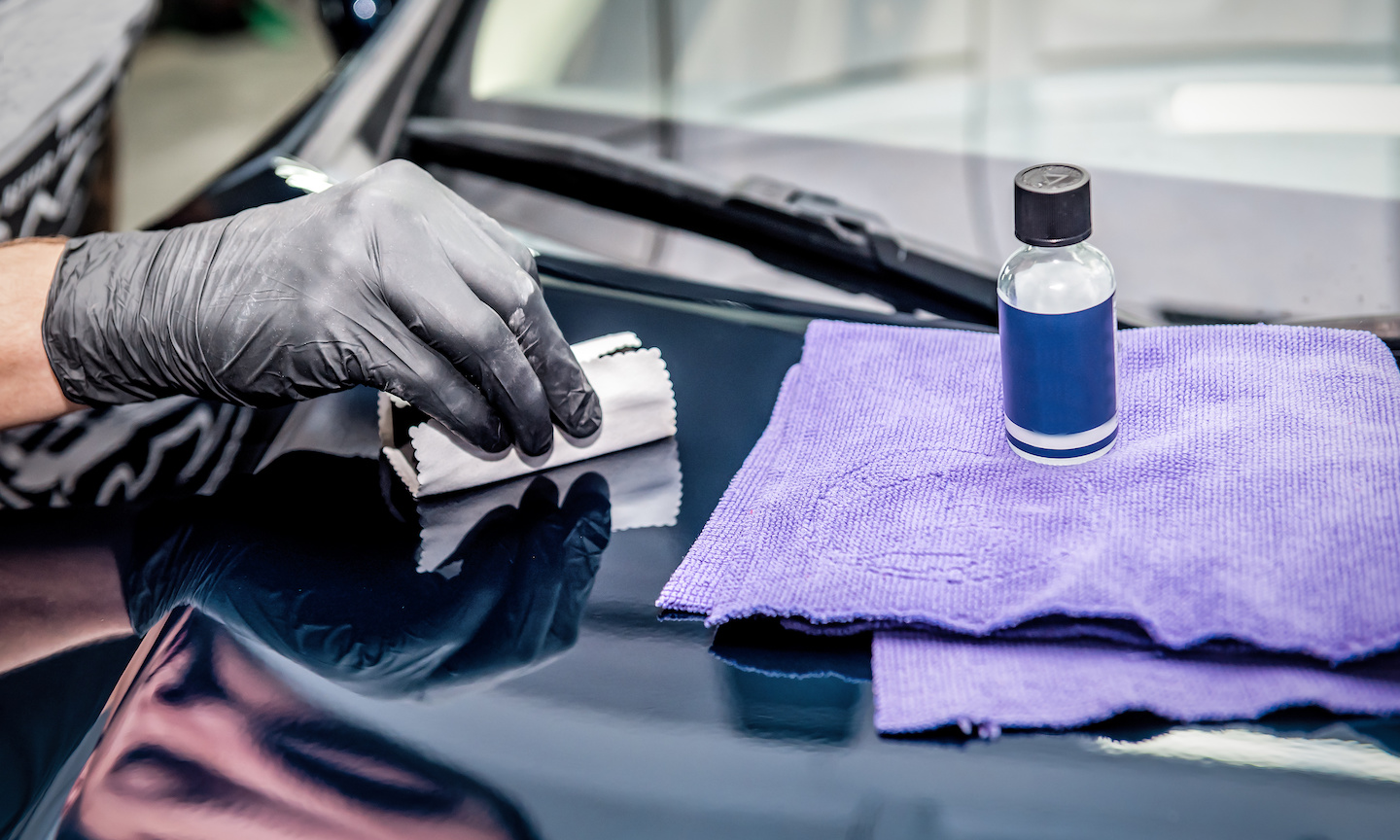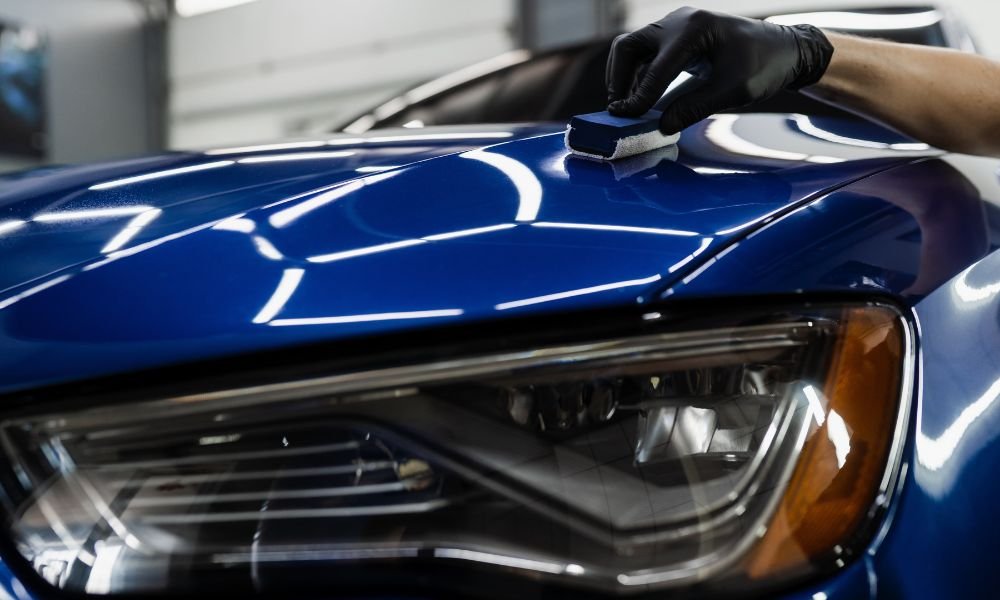The Environmental Advantages of Using Ceramic Coating on Your Lorry
The Environmental Advantages of Using Ceramic Coating on Your Lorry
Blog Article
Comprehending the Science Behind Ceramic Coating for Improved Car Longevity
The science of ceramic finishing is changing automobile maintenance by offering a formidable shield against extreme environmental aspects. At its core, this innovation takes advantage of the power of silicon dioxide and titanium dioxide to create a long lasting, safety layer. What specifically makes these substances so reliable in securing an automobile's exterior? As we explore the intricate make-up and application procedure of ceramic finishes, we discover the keys behind their premium defense and durability. How does this contrast to standard techniques, and what ramifications does it have for vehicle maintenance in the long-term? The solutions may shock you.

Structure of Ceramic Coatings
Ceramic coverings are mostly made up of silicon dioxide (SiO2), which is derived from natural materials like quartz and sand. In addition to SiO2, ceramic finishes frequently integrate titanium dioxide (TiO2) for improved UV defense and raised resistance to environmental contaminants.
The formula of ceramic layers is a meticulous process where the concentration of SiO2 can considerably affect the coating's performance. Higher SiO2 content generally leads to higher toughness and solidity, adding to the coating's capacity to stand up to scrapes and chemical etching. Nevertheless, the balance of parts is crucial; as well much SiO2 can make the layer fragile, while inadequate can endanger its safety buildings.
Makers may also integrate added compounds, such as polysilazane, to improve adaptability and ease of application. These ingredients boost the finish's hydrophobic homes, making sure water and pollutants bead off the surface area effortlessly. This crafted structure emphasizes the effectiveness of ceramic finishings in securing a car's exterior versus a range of unfavorable problems.
Application Refine Explained
Using a ceramic covering to a car includes several essential steps, each vital to making certain optimal adhesion and efficiency of the safety layer - ceramic coating. The process starts with a comprehensive clean and purification of the car's surface area to remove dirt, grime, and previous waxes or sealers. This action is vital as any pollutants left externally can hinder the coating's capability to bond effectively
Complying with the first cleaning, the following step includes brightening the car to get rid of any kind of imperfections, such as swirl marks or scrapes. Sprucing up ensures a smooth surface, which is crucial for the coating to adhere appropriately and offer an uniform coating. After brightening, a surface preparation spray is utilized to remove any staying deposits and make certain that the surface is entirely clean.

Protective Benefits
Usually hailed for its phenomenal protective high qualities, a ceramic coating provides countless benefits that dramatically improve lorry resilience. At its core, ceramic layer forms a hard, semi-permanent barrier over an automobile's outside, which acts as a guard versus numerous environmental risks.
Additionally, ceramic finishings exhibit hydrophobic residential properties, meaning they fend off water and assist in a self-cleaning result. This feature lowers the adherence of dirt and mud, simplifying maintenance and cleaning processes. The finish's resistance to chemical etching better makes certain that the car's surface stays unblemished in spite of direct exposure to extreme cleansing agents and contaminants.
Along with these protective benefits, the ceramic finishing improves an automobile's aesthetic charm by developing a shiny coating that emphasizes shade deepness and quality. This not only maintains the lorry's aesthetic allure but also contributes to its lasting worth by maintaining the stability of its exterior over time.
Comparing to Traditional Approaches
Unlike typical approaches of automobile security, such as waxing or sealers, ceramic finishings provide an even more durable and resilient service. Where waxes and sealers usually give a temporary layer of protection, typically requiring reapplication every couple of months, ceramic finishes develop a semi-permanent bond with the lorry's paint. This bond develops a protective layer that is resistant to environmental impurities, UV damages, and minor abrasions.
Standard waxes are mostly composed of all-natural components like carnauba wax, supplying a shiny finish yet doing not have the robust safety high qualities of ceramic coverings. Sealers, while synthetic and offering a little much web better toughness than waxes, still drop short in comparison to the durability and chemical resistance of ceramic layers. The innovative technology of ceramic finishes includes nanotechnology, which enables them to complete microscopic blemishes in the paint surface, causing a smoother and a lot more hydrophobic finish.
In terms of application, ceramic coverings call for a more careful process, usually requiring specialist installation to make sure optimum performance. This contrasts with the relatively simple application of waxes and sealants, which can be used in the house. However, the remarkable protection and visual enhancement provided by ceramic finishes warrant the investment for those seeking long-lasting lorry preservation.
Longevity and Upkeep
How does the durability of ceramic finishes convert right into convenience of upkeep for lorry owners? The advanced formulation of ceramic coverings offers a robust you could try here protective layer on the car's surface area, which dramatically expands the life-span of the car's exterior finish. This durability implies that the coating acts as a shield versus ecological pollutants such as UV rays, bird droppings, and roadway gunk, which can otherwise degrade paintwork with time. Therefore, lorries covered with ceramic products require much less regular washing and detailing initiatives, therefore minimizing upkeep time and prices for proprietors.
Additionally, the hydrophobic nature of ceramic finishings enables water and various other liquids to grain up and roll off the surface, carrying dust and debris with them. This home minimizes the buildup of contaminants, making regular cleansing much more effective and less labor-intensive. Proprietors take advantage of a consistently streamlined, glossy look with minimal initiative. However, while the layer itself is resilient, it is not completely maintenance-free. Routine inspections for damage and occasional reapplication are advised to guarantee the safety layer remains intact. Therefore, ceramic coatings supply an important equilibrium between long-lasting longevity and simplified maintenance for automobile care.
Verdict
Ceramic coatings, with their innovative chemical structure of silicon dioxide and titanium dioxide, offer a formidable obstacle against environmental damage, significantly improving vehicle resilience. When compared to conventional methods, ceramic layers use exceptional defense against UV rays, oxidation, and chemical etching - ceramic a fantastic read coating.
The solution of ceramic layers is a careful procedure where the focus of SiO2 can considerably affect the finishing's efficiency.Applying a ceramic layer to an automobile entails a number of critical steps, each crucial to making certain ideal attachment and performance of the protective layer.Usually hailed for its extraordinary safety qualities, a ceramic finish offers various advantages that significantly improve lorry durability. The advanced formula of ceramic layers provides a robust protective layer on the automobile's surface area, which significantly prolongs the life-span of the vehicle's exterior surface.Ceramic layers, with their advanced chemical composition of silicon dioxide and titanium dioxide, offer an awesome barrier against environmental damage, considerably improving automobile longevity.
Report this page